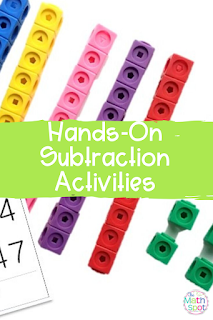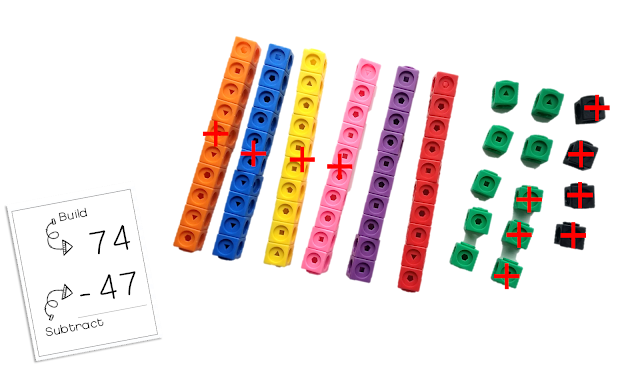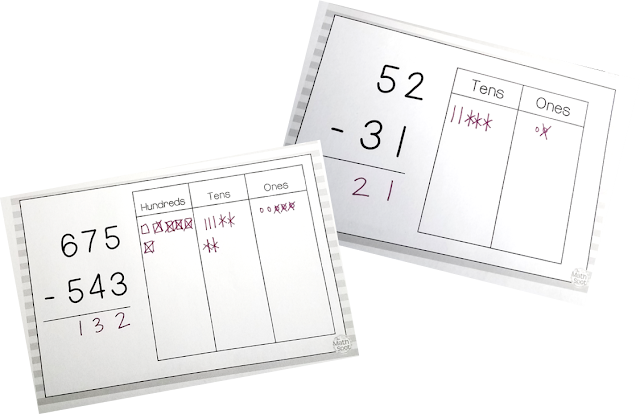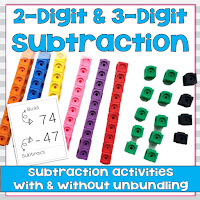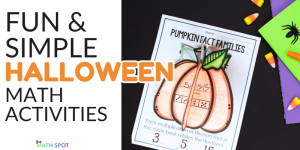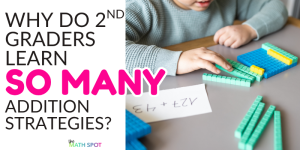This post contains affiliate links. This means that when you make a purchase, at no additional cost to you, I will earn a small commission.
It’s about that time of year when 2nd grade students begin to delve into subtraction with regrouping. Right off the bat, I want to mention that the standard algorithm is NOT a part of the second grade standards! That being said, so many of the programs that we use expect that students use the algorithm and even “exposure” sticks with our students. Luckily there is a way to teach subtraction with regrouping that honors the developmental needs of second-grade students.
The C-R-A (Concrete, Representative, Abstract) approach is the way to go here! Start students with hands on materials and, at first, don’t expect any notation at all in terms of the standard algorithm, and allow students to explore the crossroads of operation and place value.
Concrete Materials
When choosing concrete materials for your students to use when adding or subtracting multi-digit numbers consider the difference between groupable and pre-grouped models.
Base ten blocks are a common tool used to represent subtraction for early learners. There is nothing wrong with using this tool. Be aware, however that
base ten blocks are a
pre-grouped model and are not appropriate for all learners.
Some of your students may have difficulty understanding why you would “trade a ten for ten ones” when using base ten blocks. Consider starting your instruction using a groupable model such as
linking cubes.
You can see in the example above the strength of a groupable model. When subtracting 47 from 74, sutdents were able to break a ten into ones rather than “trading” one item for another. This is more true to what actually happens when subtracting!
Representative Models
Once students understand what is happening when regrouping or unbundling in subtraction, they may be able to transition to subtracting without using a physical concrete material. One representative model that many students find success with is the place value chart.
An especially effective way of transitioning to a representative model is to ask students to use a concrete material and to “draw what is happening to your blocks”. In the 3-digit example above, students would start by building 675 with a concrete material such as base ten blocks. Students would then draw the 6 hundreds, 7 tens and 5 ones that they have built. As they manipulate their blocks, they would also reflect these changes in their drawing as well.
As with concrete materials, there are nuances in representations as well. Your students may start by showing hundreds, tens and ones as a place value drawing because they are a more direct representation of place value. As your students become more confident, they may be able to simply draw dots in each column of the place value chart to represent the number in each place value.
Abstract
I’ll say, once again, that the standard algorithm is NOT expected in 2nd grade! That being said, programs, parents, and older brothers and sisters are all going to provide exposure to the algorithm. If you would like to introduce the algorithm in a more conceptual way, consider asking your students to “record what is happening with numbers”. This can be done at either the concrete or representative stage. As students are regrouping or unbundling with blocks, they can show the changes in each place value numerically. Again, as students are using place value drawings to show unbundling, they can record these changes as they would be written in the traditional algorthim.
Related Resources:
Pin For Later:
